The first of our World War I resources blogposts focuses on the Friends Peace Committee, a committee of Meeting for Sufferings (the standing representative body of Quakers in Britain) that had already been in existence for many years before the outbreak of the War.
What was the Friends Peace Committee?
From its formation in the late 1880s, Friends Peace Committee was a vigorous Quaker committee with a strong outward looking character. Through a network of correspondents in Quaker meetings and active involvement with other peace organisations it aimed to establish local and international links with the wider peace movement.
When war was declared in 1914 the Peace Committee was already actively engaged in publishing and distributing peace literature – books, posters, postcards – campaigning against the growth in armaments and the threat of militarism, promoting arbitration, influencing public opinion and petitioning government. As the literature being distributed shows, Quakers were ready to speak out on social and economic issues – “The armaments of the world… increasingly enrich the war traders and absorb the earnings and energy of the peoples in unproductive labour. They provoke suspicion and distrust and endanger the outbreak of devastating war” (report of Peace Committee for the year 1913-1914, London Yearly Meeting Proceedings, p.116).
The Peace Committee strongly urged Friends to become involved in other peace organisations and activities, locally, nationally and internationally. Its own publications show a perhaps surprising willingness to appeal to its audience in non-denominational, sometimes purely lay, terms.

Civil liberty or military despotism, postcard issued by the Peace Committee of the Society of Friends, 1913. Library ref.: Vol. T/218-219i
The Peace Committee was concerned to involve young Friends, and its membership was not limited to those already serving on the Meeting for Sufferings. Women had played an important role in the Committee from the beginning, including some indefatigable campaigners, such as Ellen Robinson (1840-1912), and later, during the War, Marian E. Ellis (1878-1952) and Joan Mary Fry (1862-1955).
- Joan Mary Fry (1862-1955) (Library ref. F91)
- Horace G. Alexander (1889-1989) (Library ref.: A128)
- Herbert Corder (1915-1937) (Library ref.: C45)
- Henry T. Hodgkin (1877-1933) (Library ref.: H151)
- Edward Grubb (1854-1939) (Library ref.: G31)
- Carl Heath (1869-1950) (Library ref: H37)
What sources does the Library hold on the work of Friends Peace Committee during the First World War?
Peace Committee archives: minutes
The Library holds the archives of Friends Peace Committee from 1888 to 1965,
when its work was taken over by the new Peace & International Relations Committee. The World War I years are covered by two minute books for the years 1912-1916 and 1916-1921.
In the first year of the War a War Sub-committee was formed, with a membership extending outside the Peace Committee. Its records consist of one minute book recording eight meetings between 2 January and 2 November 1915.
Publication and distribution of peace literature was an important part of the Peace Committee’s activity, and mentioned regularly in its minutes and reports. Its Literature Sub-committee maintained a separate volume of minutes for the years 1912-1915.
Archives of the Peace Committee and its sub-committees during the years of World War I:
- Peace Committee minutes (1912-1916) (reference PE/M5)
- Peace Committee minutes (1916-1921) (reference PE/M6)
- Literature Sub-committee minutes (1912-1915)
- War Sub-committee minutes and papers (1915)
Peace Committee reports
The Peace Committee’s annual reports to Meeting for Sufferings are published in the printed Proceedings of London Yearly Meeting (the annual gathering of British Quakers, now known as Britain Yearly Meeting).
- Report for year 1913-1914 Yearly Meeting Proceedings 1914 p.111-117
- Report for year 1914-1915 Yearly Meeting Proceedings 1915 p.10-16
- Report for year 1915-1916 Yearly Meeting Proceedings 1916 p.17-21
- Report for year 1916-1917 Yearly Meeting Proceedings 1917 p.51-55
- Report for year 1917-1918 Yearly Meeting Proceedings 1918 p. 39-41
- Report for year 1918-1919 Yearly Meeting Proceedings 1919 p. 57-60
The peace testimony, war and the question of service in wartime were obviously dominant concerns for London Yearly Meeting during the war years. The printed Proceedings record minutes on these subjects sent up for consideration by quarterly meetings around the country, as well as minutes and public statements of the Yearly Meeting itself.
Reports of other Quaker committees are also of interest for understanding the role of the Peace Committee: it would be mistaken to see its work in isolation from that of the new committees which sprang up in response to the needs of the times, sharing both members and interests, such as the Service Committee, the War Victims Relief Committee and the Emergency Committee for the Assistance of Germans, Austrians & Hungarians in Distress (the latter two of which eventually merged). These organisations will be the subject of future blogposts of their own.
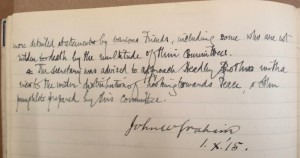
Extract from War Sub-committee minute 3, 2.ix.1915, referring to service of its members on a “multitude of committees”
An index was issued with each year’s printed Yearly Meeting Proceedings, printed at the front of each year. The Library also holds a cumulative typescript index covering the period 1907-1932 (unpublished; available in the Library reading room).
Peace Committee membership records
Peace Committee was one of the larger central committees, with an expanded membership varying from 35 to 42 during the period of the First World War. Names of individual members were published in the printed annual lists of members of Meeting for Sufferings and its committees. A month by month record of appointments made by Meeting for Sufferings can be found in the minutes of Meeting for Sufferings. The Library has compiled an index of all Friends who served on the Peace Committee, including birth and death dates and dates of service (unpublished; available in the Library reading room).
Suggestions of Friends to serve on Peace Committee or its sub-committees also came from the Committee itself, and the Committee’s minutes are the main source of information about attendance of other Quakers who weren’t actually members of the Committee. For instance, on 6 August 1914, an emergency meeting of Peace Committee “with other interested Friends” was held, with Thomas P. Newman (in the chair), John Armstrong , J. Marshall Sturge, F. J. Edminson, Herbert Corder, Mary L. Cooke, J. G. Alexander, Stephen Hobhouse, Marian Matthews (Letchworth), Marian Ellis, Harriet Alexander, Theodora Wilson Wilson, Alfred F. Fox, and E. Claude Taylor.
Peace Committee publications
Publications of the Peace Committee between 1914 and 1919 are included on the Library’s online catalogue, including books, pamphlets, circulars and postcards. To find full details, you can search the catalogue by organisation or by publisher, and limit your search by date.
The Peace Committee also produced a series of posters, some of which survive in our picture collection.
Further sources
Horace G. Alexander. “A nearly forgotten chapter in British peace activity – 1915.” Journal of the Friends Historical Society, vol. 55, no.5 ( 1987), p. 139-143. First hand account of the work of the War Sub-Committee by Horace G. Alexander, who served on it as a young man.
Margaret Glover. Images of peace in Britain from the late nineteenth century to the Second World War. PhD thesis, University of Reading, 2002.
Thomas C. Kennedy. British Quakerism 1860-1920: the transformation of a religious community. Oxford University Press, 2001. Especially chapter 9, “A ghoulish terror of darkness” p.312-387.
Thomas C. Kennedy. “Many Friends do not know where they are.” Quaker theology, no. 11 (2005). (Available online here).
Paul Laity. The British Peace Movement 1870-1914. Oxford University Press, 2001. Origins of the Friends Peace Committee (p. 118-123) and the pre-war peace movement (p. 176-215).

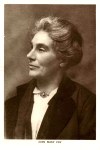
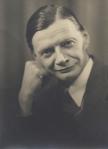

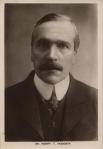

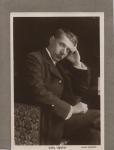
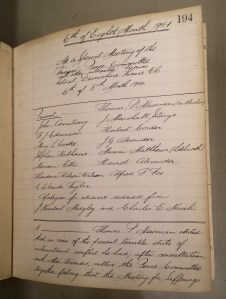
I would like to know if it is possible to hire someone at the library to research John Armstrongs participation in the peace commitee. I know my great grandfather was involved as early as 1905. He moved to Hyeres France approx 1933 until his death in 1941
Hello Bernadette – that sounds interesting. Unfortunately we don’t offer a research service like that. You could try the list of researchers maintained by AGRA (Association of Genealogists & Researchers in Archives) http://www.agra.org.uk. From our lists of members of the Peace Committee (1888-1965) it looks as though John Armstrong served on Peace Committee from 5/7/1912 to 7/7/1916. Good luck with the research.
Pingback: Quaker Strongrooms blog at the turning of the year | Quaker Strongrooms
Pingback: Remembering Opposition to War « Decade of Centenaries
This is a wonderful resource. Do you perhaps hold the journal War and Peace. I’m interested in the wholeissue of 31 April 1916, which carried “Give unti Caesar — “ by OLIVE SCHREINER.
Thanks for your comment Friend. The Library doesn’t have that journal, or a copy of the article. There are copies at the British Library and elsewhere though. SUNCAT (the Serials Union Catalogue for the UK research community) appears to list it twice (looks like the same thing). Check out the links for a range of libraries holding the journal: https://suncat.ac.uk/serials/SCID00024434347/all and https://suncat.ac.uk/serials/SCID00024818248/all
Did the Society of Friends authorize a small bronze and enamel lapel pin, manufactured by New York jewelers Dieges & Clust, which depicted the backside of a man kneeling, hands tied behind his back, with a rod threaded under his shoulders? The pin states, “Friends of Peace 1915.” It was clearly made to be worn by those that were opposed to the brutal treatment of conscientious objectors that refused induction into the Army during the First World War.
The Friends of Peace was an American anti-war organisation of the First World War period, with the no connection to Quakers. It was founded “under the auspices of German-American Alliance of Greater New York, United Irish-American Societies, American Truth Society, American Independence Union, American Humanity League, American Women of German Descent, German-American Peace Society, Star Spangled Banner Association, American Continental League, Clan-Na-Gael, German-Catholic Federation of New York, United Austrian and Hungarian-American societies, and many other American societies.” It campaigned to prevent any American involvement in the war. You can read about its aims and see lists of members in a 16 page booklet entitled, ‘Mass meeting of the friends of peace at Madison Square Garden, New York, June 24, 1915’ here https://iiif.lib.harvard.edu/manifests/view/drs:7714772 (digitised by Harvard University libraries).